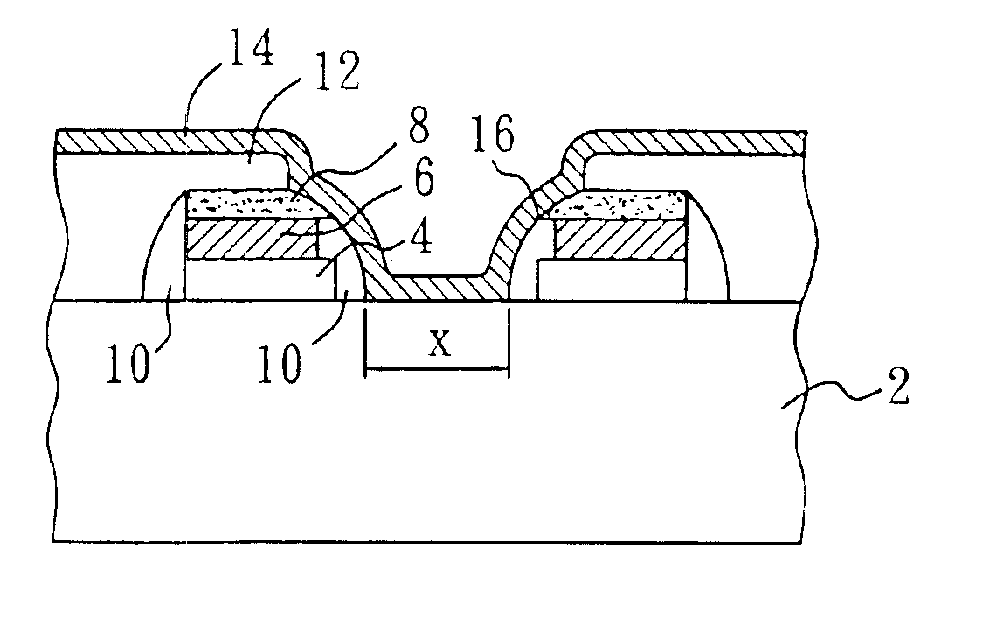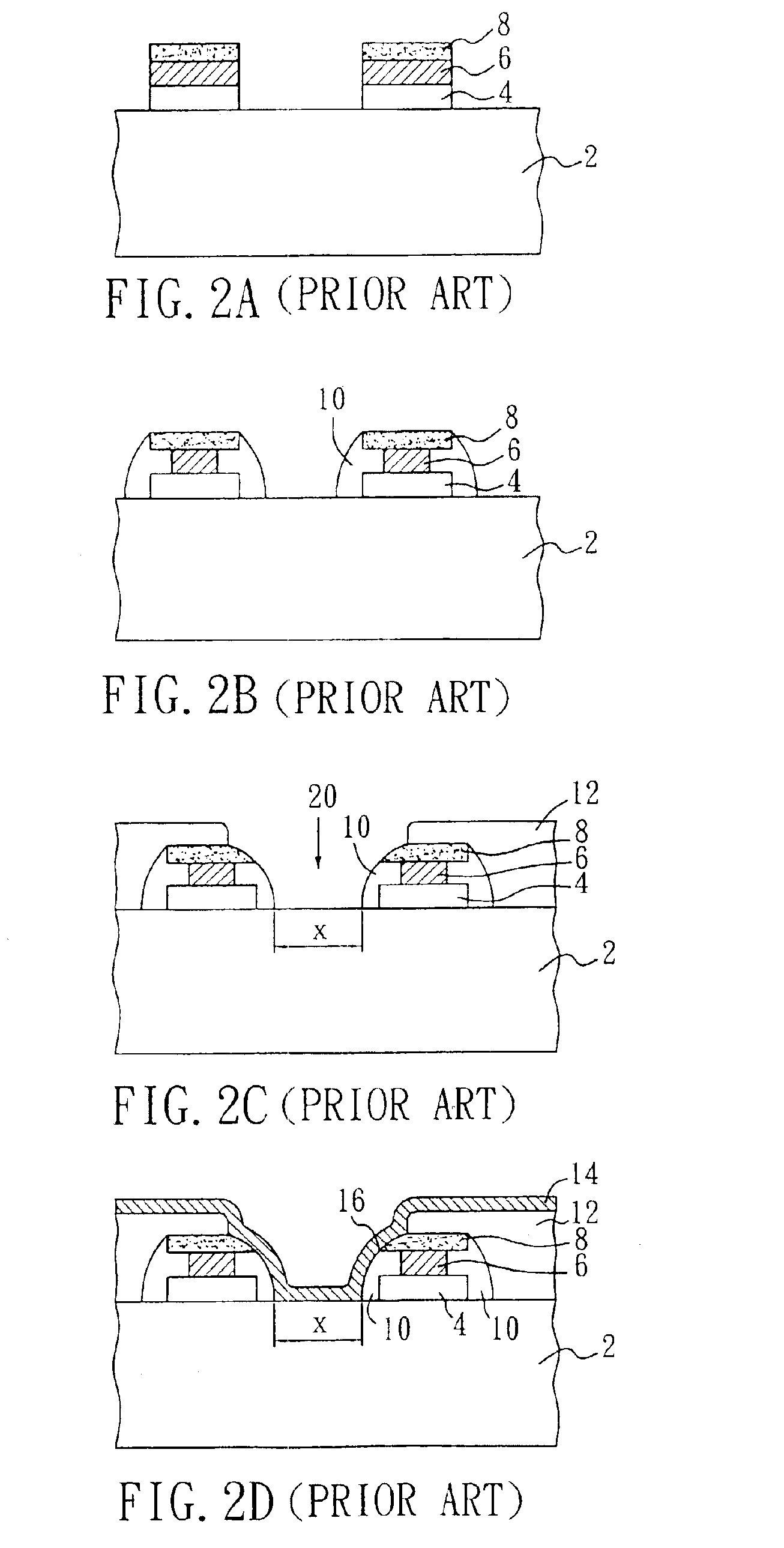Method of forming self-aligned contact structure with locally etched gate conductive layer
a contact structure and local etching technology, applied in the direction of semiconductor devices, electrical equipment, semiconductor/solid-state device details, etc., can solve the problems of high resistance of metal and generated conductivity not high enough for a good conductive layer of mos devices, and achieve the effect of low resistan
- Summary
- Abstract
- Description
- Claims
- Application Information
AI Technical Summary
Benefits of technology
Problems solved by technology
Method used
Image
Examples
first embodiment
the present invention is described by the structures from FIGS. 3A-3F and the method shown in the flow chart of FIGS. 4A-4B.
First, a substrate 2, which has a first conductive layer 4, a second conductive layer 6, and an insulating layer 8 formed in sequence from bottom to top, is prepared. The first conductive layer 4 can be a polysilicon layer or an amorphous silicon layer. The second conductive layer 6 can be a metal silicide layer, such as a tungsten silicide (WSi) layer, and the insulating layer 8 can be a silicon nitride layer. Next, as shown in FIG. 4A, a gate conductor (GC) photomask is opened (step 401). Next, a plurality of separated gate structures is formed by performing an etching process to the top surface of the substrate 2 (step 402).
Next, as shown in FIGS. 3A-4A, a photoresist material layer 22 is deposited, or an anti-reflective coating (ARC, not shown in the figures), and a photoresist material layer 22 are in turn deposited on the entire surface of the substrate 2...
second embodiment
the present invention is illustrated in the structures from FIGS. 5A-5F and the method shown in the flow chart of FIGS. 6A-6B.
First, a substrate 2 that has a first conductive layer 4, a second conductive layer 6, and an insulating layer 8 formed in sequence from bottom to top, is prepared. The first conductive layer 4 can be a polysilicon layer or an amorphous silicon layer, the second conductive layer 6 can be a metal silicide layer, such as a tungsten silicide (WSi) layer, and the insulating layer can be a silicon nitride layer. Next, as shown in FIG. 5A, the gate conductor (GC) photomask is opened (step 601). Next, a plurality of separated gate structures is formed by performing an etching process to the top surface of the substrate 2 (step 602).
Next, as shown in FIGS. 5A-6A, a photoresist material layer 22 is deposited, or an anti-reflective coating (ARC, not shown in the figures) and a photoresist material layer 22 are deposited, in turn, on the entire surface of the substrate ...
PUM
 Login to View More
Login to View More Abstract
Description
Claims
Application Information
 Login to View More
Login to View More - R&D
- Intellectual Property
- Life Sciences
- Materials
- Tech Scout
- Unparalleled Data Quality
- Higher Quality Content
- 60% Fewer Hallucinations
Browse by: Latest US Patents, China's latest patents, Technical Efficacy Thesaurus, Application Domain, Technology Topic, Popular Technical Reports.
© 2025 PatSnap. All rights reserved.Legal|Privacy policy|Modern Slavery Act Transparency Statement|Sitemap|About US| Contact US: help@patsnap.com



